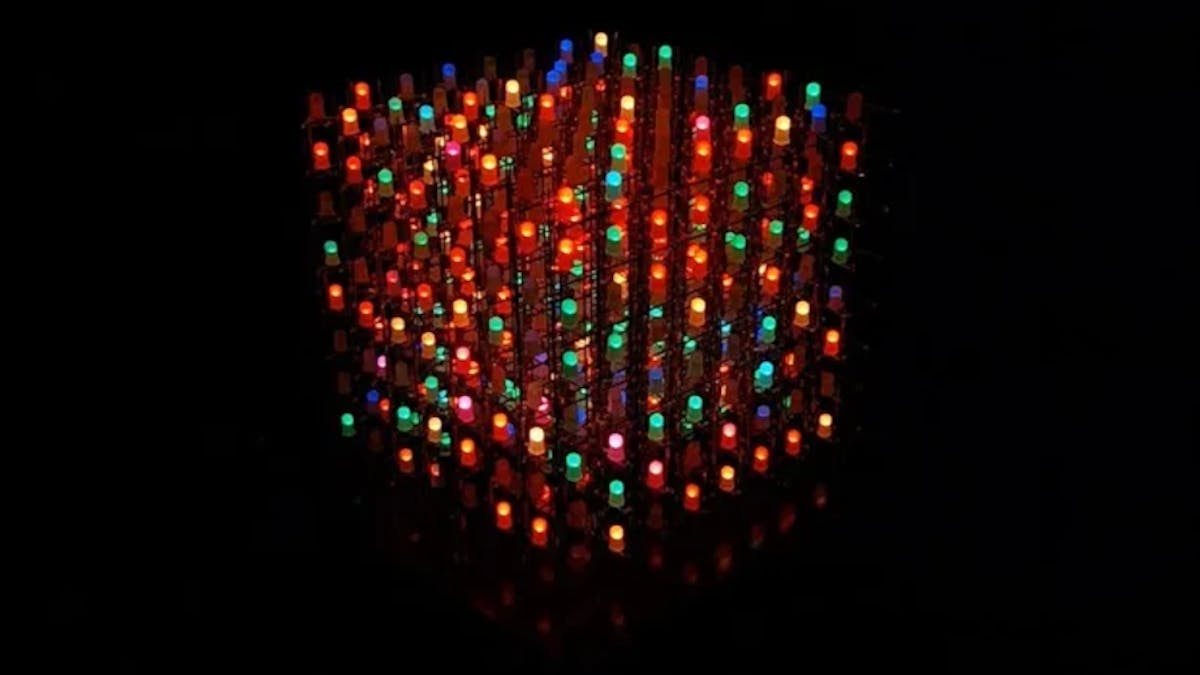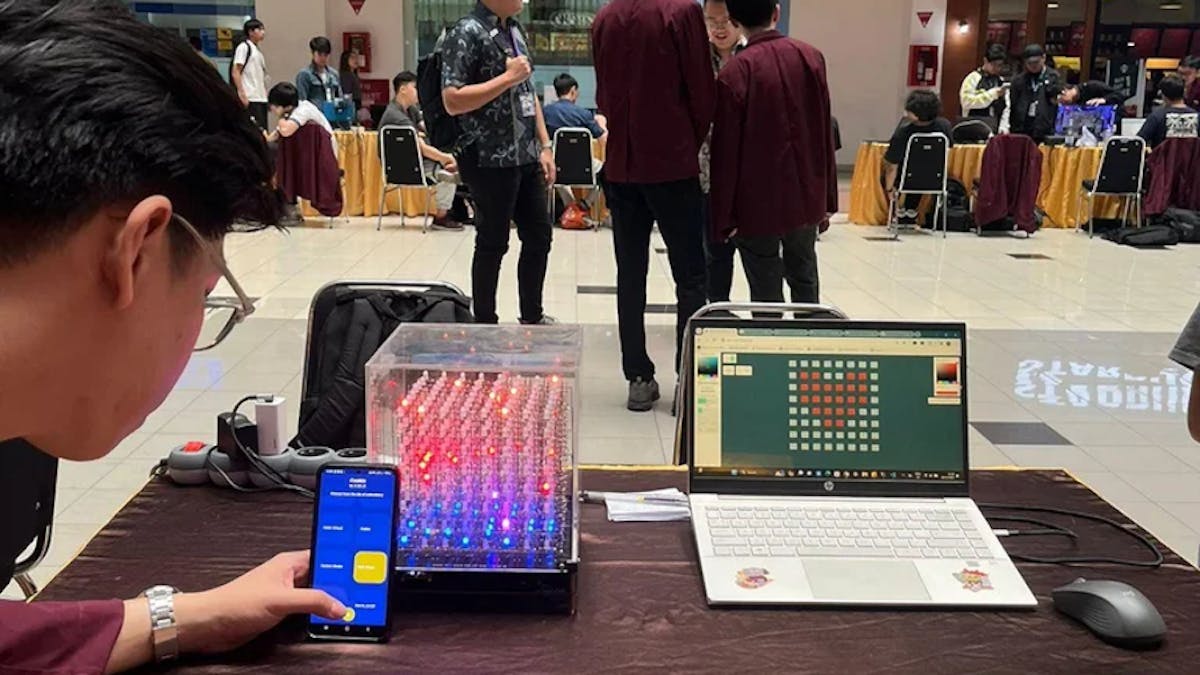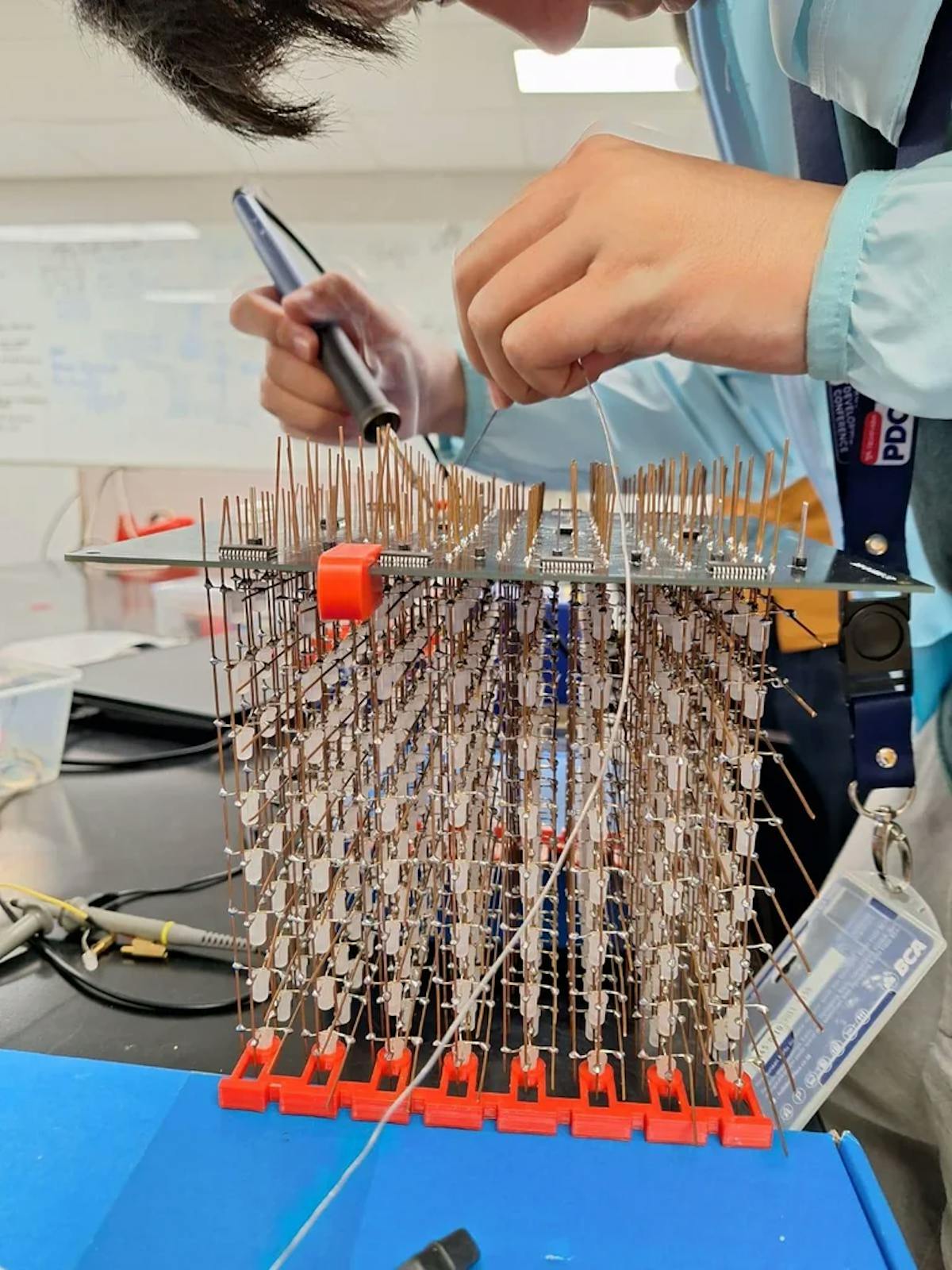Coobie V2 Is a Web-Driven 512-LED RGB Cube Display, Built by a Student Trio
Built as a more robust and reliable successor to the original Coobie, Coobie V2 crams 512 RGB LEDs into a compact web-controlled package.

BINUS University students Michael Angelo Chandra, John Lukito, and Johevin Blesstowi have written a guide to building your own Espressif ESP32-based 8×8×8 RGB LED cube display: the Coobie V2.
"These days, three-dimensional representation (3D) is popular. 3D representation can be found in cinemas, digital modelling, AR, and VR. We are currently moving towards a world where the boundary of dimension is increasingly being exceeded," the team writes of its work. "Where the world has seen a masterful implementation of 3D display in drone swarm, we aim to develop a more portable, as mesmerizing and showy, albeit less sharper, laymen-controllable 3D display in the form of Coobie V2, the web-controlled 8×8×8 RGB LED Cube."

As the name implies, this isn't the first Coobie. The original model, the students admit, had its problems: it was bulky, fragile, and had issues with signal interference. Coobie V2, by contrast, is more easily portable, less glitchy, and more robust — and the dedicated app used to control the original cube has been replaced by a web app, allowing for custom animations to be defined and played directly in-browser.
"We created this website using Next.js and ThreeJS [and it] connects to the cloud backend," the students explain of the cube's user interface. "This website is an innovation never done before in the grand scheme of LED Cube[s]. Through this website, anyone can create their own pattern, animation, anything they can think of that is better represented in 3D."

In terms of the hardware, the Coobie V2 is driven by an Espressif ESP32-S3 microcontroller with a level shifter, eight MOSFETs, 12 Shenzhen Sunmoon Micro SM16126D LED drivers, a shift register, a transistor array, 512 RGB LEDs, and an impressive 100 meters (around 328 feet) of copper wire, a bunch of PLA filament for 3D-printing jigs to form the cube, and "lots of female and male [pin] headers."
The full project is documented on Instructables, complete with 3D print files for the jigs and links to the source code under an unspecified license.
Freelance journalist, technical author, hacker, tinkerer, erstwhile sysadmin. For hire: freelance@halfacree.co.uk.

